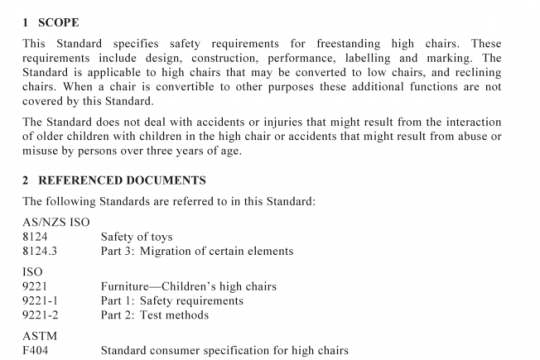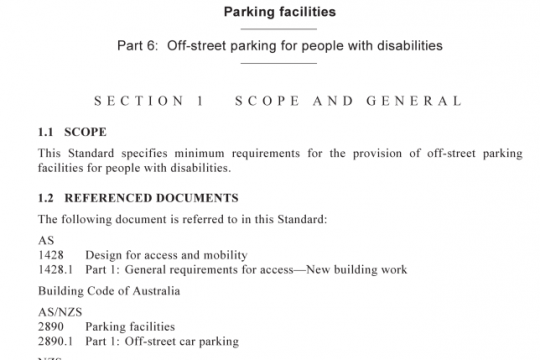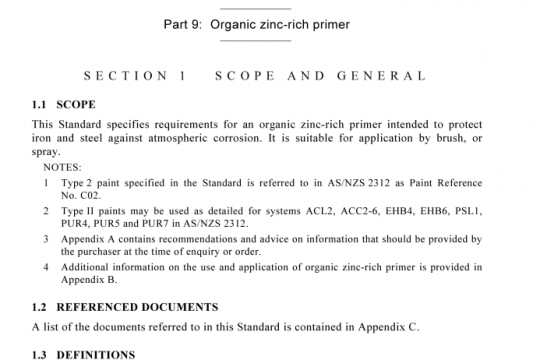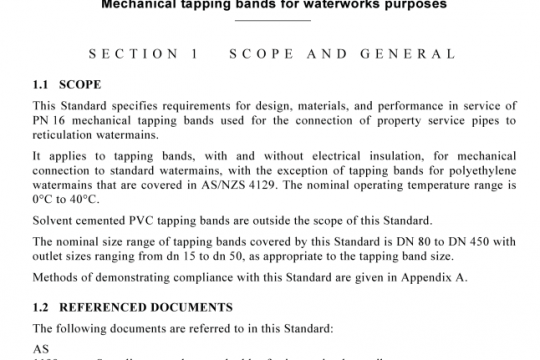AS 1012.9:2014 pdf free
AS 1012.9:2014 pdf free.Methods of testing concrete
The plates and equipment used for moulded capping shall comply with the following requirements:
(a) Cement mortar or paste, and special gypsum plaster caps shall be formed against plate-glass, or a machined metal plane plate, at least 6 mm thick. The diameter of all such plates shall be at least 25 mm larger than the nominal diameter of the specimen,and the surfaces shall not depart from a plane by more than 0.05 mm.
(b) Caps made from sulphur mixtures shall be formed against a metal plate in which a recess has been machined. The thickness of the metal in the recessed area shall be at least 10 mm. The base of the recess shall be a circle whose diameter is approximately 5 mm greater than the nominal diameter of the specimen. The side of the recess shall slope to facilitate removal. The recessed area shall not depart from a true plane to an extent that results in caps with surfaces which themselves depart from a plane by more than 0.05 mm.
(c) Capping plates shall be thinly coated with mineral oil to prevent adhesion of the capping material to the plate.
(d) Alignment devices shall be used in conjunction with the plates to ensure that the specified perpendicularity of the cap to axis of the specimen is obtained.
Hardened concrete cylinders and cores shall be capped in accordance with the following procedures:
(a) Where a cement mortar or paste, or special gypsum plaster cap is to be applied,ensure that the end of the cylinder is in the saturated surface-dry condition just prior to capping.
NOTE: A quantity of mortar [see Clause 6.2.2(b)] is placed on the prepared end of the cylinder, carefully worked into the surface with a small trowel and then shaped to form a low dome. Care should be taken not to entrap any air in the mortar during the forming process. A plate is then placed on the mortar dome and firmly forced onto the cylinder surface until complete coverage of the cylinder is obtained and a cap of suitable thinness is achieved. A glass plate may be used to detect air bubbles, which would lead to later rejection of the cap.
(b) Where a cap of sulphur mixture is to be applied, dry the surface to be capped by blowing ambient or heated air across the surface. Ensure that the drying does not extend below the surface of the specimen by more than the minimum amount required to provide a dry surface for adhesion of the sulphur mixture.
NOTE: To assist in bonding a sulphur-mixture cap, a thin layer of shellac solution may be applied to the end of the specimen.AS 1012.9 pdf free download.




